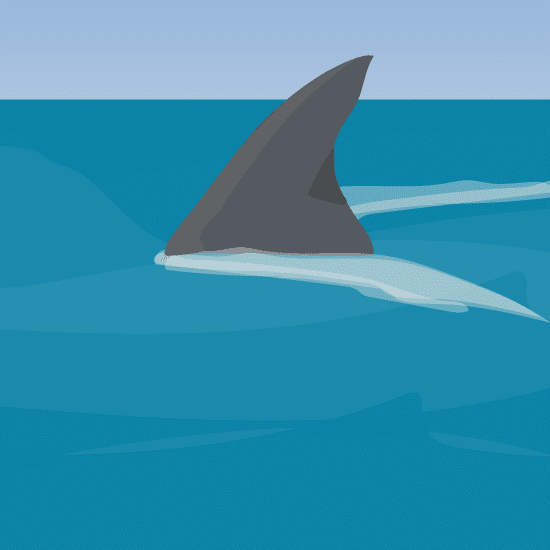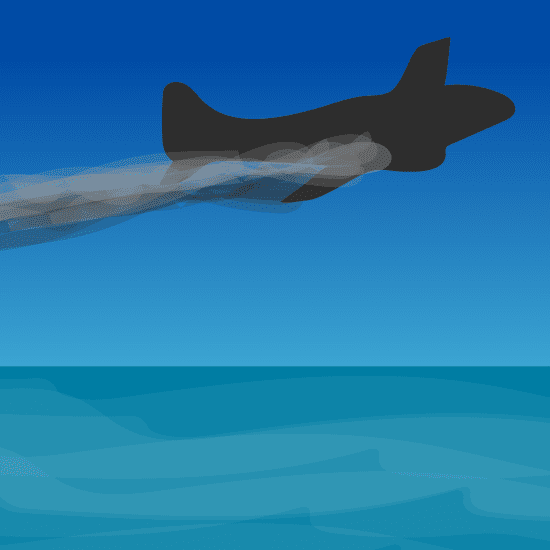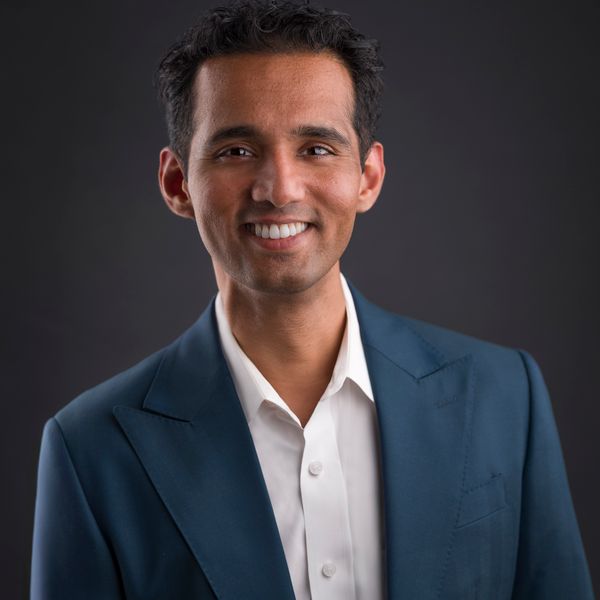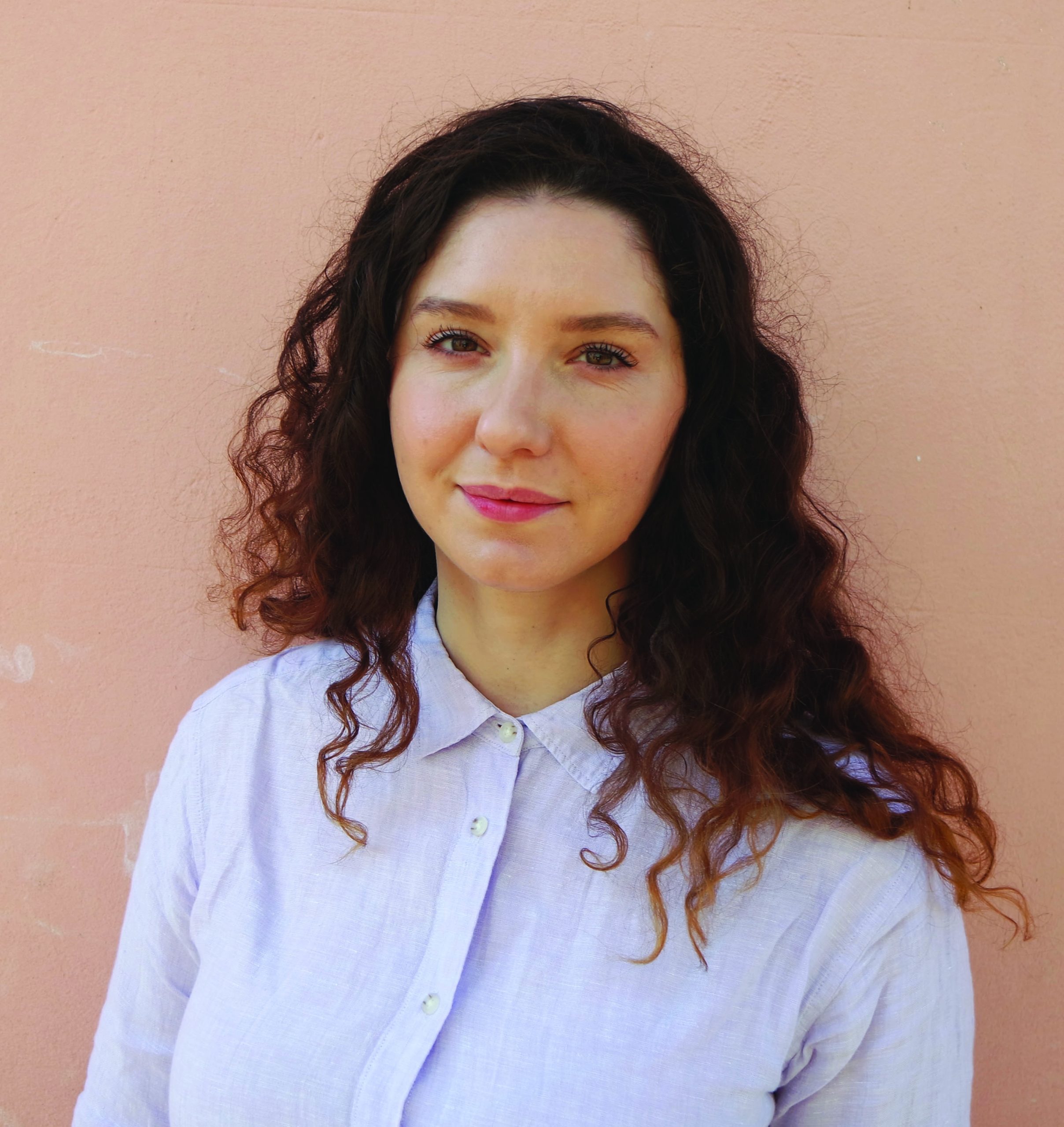Once in an interview, Robert Downey Jr. said that his drug of choice was “more,” and everyone thought he was really profound because they didn’t know it was something people say in Twelve Step meetings all the time.
He’s right, though. The general rule of thumb for addicts is if taking one feels good, taking four must feel great. But I think ultimately, drugs for me were about less. Less to worry about, less to think about. My world grew small. Drugs brought me closer to nothing, and that was the goal.
On June 6, 1950, a twin-engine C-46 flying approximately two hundred seventy-five miles northeast of Miami, Florida, begins to experience engine trouble. Upon the failure of both engines, the plane experiences a rapid loss of altitude over the Atlantic Ocean, forcing the pilot to make an emergency landing in the water. At this point, thirty-eight of the sixty-two passengers are able to make it safely to life rafts. Ten hours after the initial crash, rescue ships arrive to pick up the survivors. Out of these thirty-eight remaining passengers, one, twenty-five-year-old Pedro Guzman—having survived the initial crash, having survived ten hours in the open sea—will jump out of his life raft into the water to swim out to the rescue ship.
Before Dr. Gregg, getting drugs meant trips to Riveria Beach. The Raw-vera, as we often called it. It involved Oxys in cellophane cigarette wrappers and paranoid glances into the rearview mirror. It meant driving over to Tee’s house, a small mint green bungalow west of the train tracks in Lake Worth, and standing in his kitchen as I tried not to stare too hard at the amber bottles on the table, some filled with weed, some filled with crack, as I waited for him to fish out a couple of pills.
But now the pill bottles have my name on them. I let them roll around in my passenger seat and don’t worry about getting pulled over. Suboxone. Valium. Adderall. I feel so adult. Like a housewife in the fifties. Now, I sit on a brown leather couch in a sparse, modern office and look into Dr. Gregg’s eyes as I speak. There’s no feeling that can’t be cured.

Riflemen aboard the rescue ship will notice the sharks circling the wreck are now moving toward Guzman. While shots fired into the water initially seem to deter the sharks, one will reverse course and head back toward Guzman just as he approaches the ship. Although the rescue crew is able to get him aboard, he will die ten minutes after being pulled to safety from injuries sustained during a shark attack.
Sometimes, I worry that the term “harm reduction” implies resignation. Like the harm revealed itself to be too great to fight, its roots too deep to be removed, so I compromised. I agreed to coexist with harm on the condition that it not kill me. These felt like reasonable terms.
People on Suboxone exist in a state somewhere between active addiction and sobriety. It’s a state of unbelonging. Our narratives do not abide by the formula of traditional redemption shared by drunks and junkies. Rather than arcs, our stories form ellipses. The ambiguous, questionable nature of our recovery lacks the heart-swelling, hard-earned ending people have come to expect—no gritty detox scene where the protagonist sweats and shits and pukes and swears she’s going to leave, that it’s too hard, but then finds the strength within her to stay.
Rather than allowing Jesus into our hearts, we’ve opted for Suboxone beneath our tongues, bypassing the brutal detox and the longer-lasting symptoms of post-acute withdrawal syndrome, which can drag on for months.
It’s not uncommon to hear people say that medication-assisted treatment (MAT) methods, like Suboxone and methadone maintenance, are just substituting one drug for another, that people on MAT are not really clean. After all, buprenorphine (one of the active ingredients in Suboxone) is an opiate. And while you don’t experience the type of euphoric high that drugs like heroin or OxyContin provide, it is still addictive.
But I think this opposition stems from a deeper place, that maybe it’s rooted in our culture’s puritanical desire to see people punished, from a belief that the pain of kicking is an integral part of finding redemption. Maybe they want people to pay for their sins.
Imagine this scenario: you are in a plane when the cabin pressure drops suddenly. Looking out the window, the ocean is rushing toward you. There’s panic and chaos. Screams and muttered prayers. You brace for impact, sure you will die. But then you don’t.
Initially, Suboxone worked. My life regained a sense of normalcy. And thanks to Suboxone’s “ceiling effect” limiting its potential to get me high, I wasn’t able to abuse it. I went back to school, worked multiple jobs. I could travel without worrying about running out of pills and getting sick. I no longer needed my boyfriend to kick me under the table because I had nodded off at a restaurant with friends. I no longer woke up every morning in withdrawal, sticky with sweat, my back aching, wanting to die before my eyes even opened.
Sure, the argument could be made that without Suboxone, I would have been forced to get off drugs sooner. Or I could have overdosed and died. Or stuck my 9mm in my mouth.
It’s hard to speak hypothetically when my life is so very real.
I wonder if he even needed to swim to the rescue ship. If he had just waited a little longer, could they have thrown his raft a line and pulled it close enough to pluck each passenger to safety? Did he think he was safe? That he had lived through the initial crash, that he made it to a life raft, that the rescue ship was in his sight, that he believed he had already survived everything that needed surviving?
I had been buying Suboxone from friends when I first got on it, but after six months, I decided it would be safer and less illegal to get a script. And that’s when I found Dr. Gregg.
I guess when I thought of “pill mills,” I pictured an office crammed full of junkies waiting to see a doctor who didn’t even bother to look up at his patients as he made it rain with his prescription pad.
But there is something so warm and inviting about the tone of Dr. Gregg’s voice, the way he leans in when I talk, his eyes filled with the kind of concern and compassion I have been looking for in someone, anyone. He not only looks at me, but he sees me. He doesn’t judge me or blame me. He commends my insight. He supports me.
He also starts me on a dose of Suboxone that is twice what I have been taking. He raises the dose again when I make an offhanded comment about my back bothering me during one of our sessions. Then he gives me a test to determine whether I have ADHD, and apparently, I ace it because I walk out of there with a script for Adderall. Eventually, he’ll add Valium to round out the regimen.
This is what I need you to believe: I went there to get help. I swear. I thought I would go to this doctor, take my Suboxone as directed, and, with his help, eventually taper off. I promise you this was the plan. It just so happened Dr. Gregg had a different plan, and I liked his better.
I was there because I had shown a proclivity for prescription drugs and self-destruction. I knew only one way of using drugs, and that was taking them like I had a death wish. But I don’t say any of this because the moment Dr. Gregg mentioned Adderall, whatever intentions I had to get better evaporated. I just didn’t have it in me to fight for my own well-being.
Part of me did question if I was getting one over on him. Maybe he really did believe he was helping; he was just misguided. Or maybe, like any good dope dealer, he knew how to keep a customer on the line.
There is no talk of ever tapering off Suboxone. In fact, Dr. Gregg cautions against it.
I understand that being in a plane crash in the middle of the ocean will increase your probability of being attacked by a shark, but even still, you have to consider that if the odds of being in a plane crash are one in 11 million, and the odds of being attacked by a shark are one in 1.9 million, and you experience both of those events simultaneously, then the odds are that death had you fixed in its sight and no life raft or bullet or soft prayer could have saved you.
The thing with Adderall is that it sharpens your worst instincts. You make bad decisions with tremendous confidence, and you make them much faster than you normally would. And because you stop sleeping, you make them more often.
People were commenting on my weight loss and not in a good way. My flesh dipped between each of my ribs; my bones had become so prominent they looked as though they were pushing up against my skin, threatening to make their way out. I was a thin sliver of membrane away from rupture.
The Subs helped temper the shrill feeling in my body that comes from washing down three times my prescribed dose of Adderall with coffee, but the Valium was a lifesaver when I hit that forty-eight-hour mark of no sleep and needed a way to knock myself out.
But despite using speed and benzos like pharmaceutical on-and-off switches, I always seemed to be up all night only to sleep through the day, which is when I had things like school. And work. Or at least, I used to.
The problem was that I felt like I needed Adderall to get anything done. But then when I was on it, I didn’t care about doing any of the things I needed to do.
The other problem was my tendency to finish my thirty-day prescription in less than two weeks, and I was scrambling to buy whatever I can to hold me over until I could refill my script.
If I could describe this point in my life in the simplest terms possible, I would say this: it was not sustainable.
A year and a half after that first appointment with Dr. Gregg, I had no job, car, or money. And no other option but to kick.

Now imagine you are my parents watching me fuck up for decades, in and out of rehabs and halfway houses and psych wards, quietly bracing yourselves for the possibility of my death until I seemingly get my shit together and manage to scrape up some sobriety and stability and a shitty little life that I now cling to desperately, and you think things are going to be ok, that maybe you can exhale for the first time in twenty years. But this relief is only possible because you could not foresee that your son, your talented, successful son who has a Peloton bike and a gorgeous apartment in Jersey City—with windows from the floor to the ceiling to emphasize the view of the New York City skyline in a way that is both breathtaking and dizzying—that the phone call you feared all these years would be for him, that he would be the one to overdose.
After my brother’s funeral, we learned that, despite everyone being vaccinated, several people had gotten COVID. Eventually, half my family tested positive.
My mom said she felt like a black cloud was following us, as if we were cursed. As if tragedy were contagious. This surprised me. She had always been, above all, a practical and rational woman with a pragmatism that was both harsh and reassuring. That she would imply that these COVID cases were the result of anything other than gathering hundreds of people in close quarters from all over the United States was entirely unlike her.
But I also understand it. At one point, I believed certain things. And then my brother died, and I do not believe those things anymore. For example, I thought the worst was behind me when I got clean.
Don’t I feel fucking foolish now.
It starts as anxiety, gradually circling closer. You know what’s coming and what it’ll do to you, and although you never feared the drugs themselves would kill you, you worry the detox will. Because you know the only way to stop it—really stop it, not just quiet it momentarily with another pill—is to break the mirror in the bathroom and jam a broken shard into your femoral artery. Or twist up a bed sheet, tie it to the balcony, and jump, hoping the knot you googled will hold. Or swallow all the aspirin in the medicine cabinet and chase it with a bottle of NyQuil until you flop helplessly in and out of darkness. It’s a good thing you pawned your gun. It is a shame.
When the sweats start, you know it has begun in earnest. Soon, you’ll soak through your clothes, and it will smell like all the sadness and self-loathing inside is coming out of your pores. The feeling of air against your body releases a shiver from somewhere deep in your body, and a million goosebumps explode to the surface of your skin. Your bones begin to hum. Your muscles spasm and contract, your legs are exposed wires, the skin of plastic peeled back, and the copper tendons shoot sparks.
Unmuted, the vibrancy of the world is terrifying. Like an overexposed photograph, its brightness feels like it could gnash its teeth at you and swallow you up in its sun. Everything is too much— too painful, too beautiful, too shameful. Too hopeful. For so long, nothing touched you; nothing got through the warm fog that enveloped you. Now everything touches you, all the way down to the bone.
And when you’re already broken, it takes away your sleep. Your body fills with concrete, but your mind crackles wildly. You will take enough Seroquel and Unisom to run you to the edge of darkness, but you will not go over. You will hover at its cusp and wait till dawn. And you will think.
Every painful, broken memory will rush into you. You will not be able to stem its tide. And even worse, all the good and beautiful memories will come, and you will not understand how you got from eating orange slices at soccer games to here, how your mother would put Noxzema on your sunburned nose after spending the day at the beach, and now you are this. You remember the summer nights you spent playing ghost in the graveyard with all the kids from the neighborhood, and you will see fireflies filling up the backyard of your childhood home until it looks as though the night sky has capsized, the stars spilling out and settling down along the earth, and a lead pipe will grow in your throat, reaching into your guts, and you will want to die because you never deserved any of it. Because what is terrible in this world never hurts as much as what is good.
I’ll say it—it should have been me.
It is possible I sleep too much. And it is certain I cry too much. And I worry sometimes that this grief will take me like a riptide, dragging me out further than I’ve ever been, pulling me under.
So I go on my little nature walks and get overly excited whenever I see a roseate spoonbill. I take pictures of the baby alligators. I am no longer on Suboxone, but I remain a huge proponent of MAT—I wish my experience had gone a little differently. I volunteer to foster a dog temporarily so the owner can go to rehab, and when the owner stops responding to our messages and leaves treatment against medical advice, I adopt the dog. I try to be a better daughter (which honestly isn’t hard—I set the bar very low on that one). I buy too many gifts for my nieces when I see them, even though I know they won’t be able to fit them all in their luggage and will have to leave some behind. I get a tiny cowboy hat for my newly adopted dog and do my best to find the things that keep me tethered, that can hold me here, just long enough.
***
Rumpus original artwork by Ian MacAllen
If you or someone you know are experiencing suicidal ideation or opioid addiction, help is available: Call or text 988 to connect with trained counselors at 988 Lifeline who can provide support for mental health crises, including suicidal thoughts. The CDC’s Naloxone Toolkit provides information on how to access and administer Narcan (naloxone), a life-saving medication for opioid overdoses. The U.S. Department of Health and Human Services also offers comprehensive resources for those impacted by opioid addiction.
Voices on Addiction is a column devoted to true personal narratives of addiction, curated by Kelly Thompson, and authored by the spectrum of individuals affected by this illness. Through these essays, interviews, and book reviews we hope—in the words of Rebecca Solnit—to break the story by breaking the status quo of addiction: the shame, stigma, and hopelessness, and the lies and myths that surround it. Sisters, brothers, mothers, fathers, adult children, extended family members, spouses, friends, employers or employees, boyfriends, girlfriends, neighbors, victims of crimes, and those who’ve committed crimes as addicts, and the personnel who often serve them, nurses, doctors, social workers, therapists, prison guards, police officers, policy makers and, of course, addicts themselves: Voices on Addiction will feature your stories. Because the story of addiction impacts us all. It’s time we break it. Submit here.




